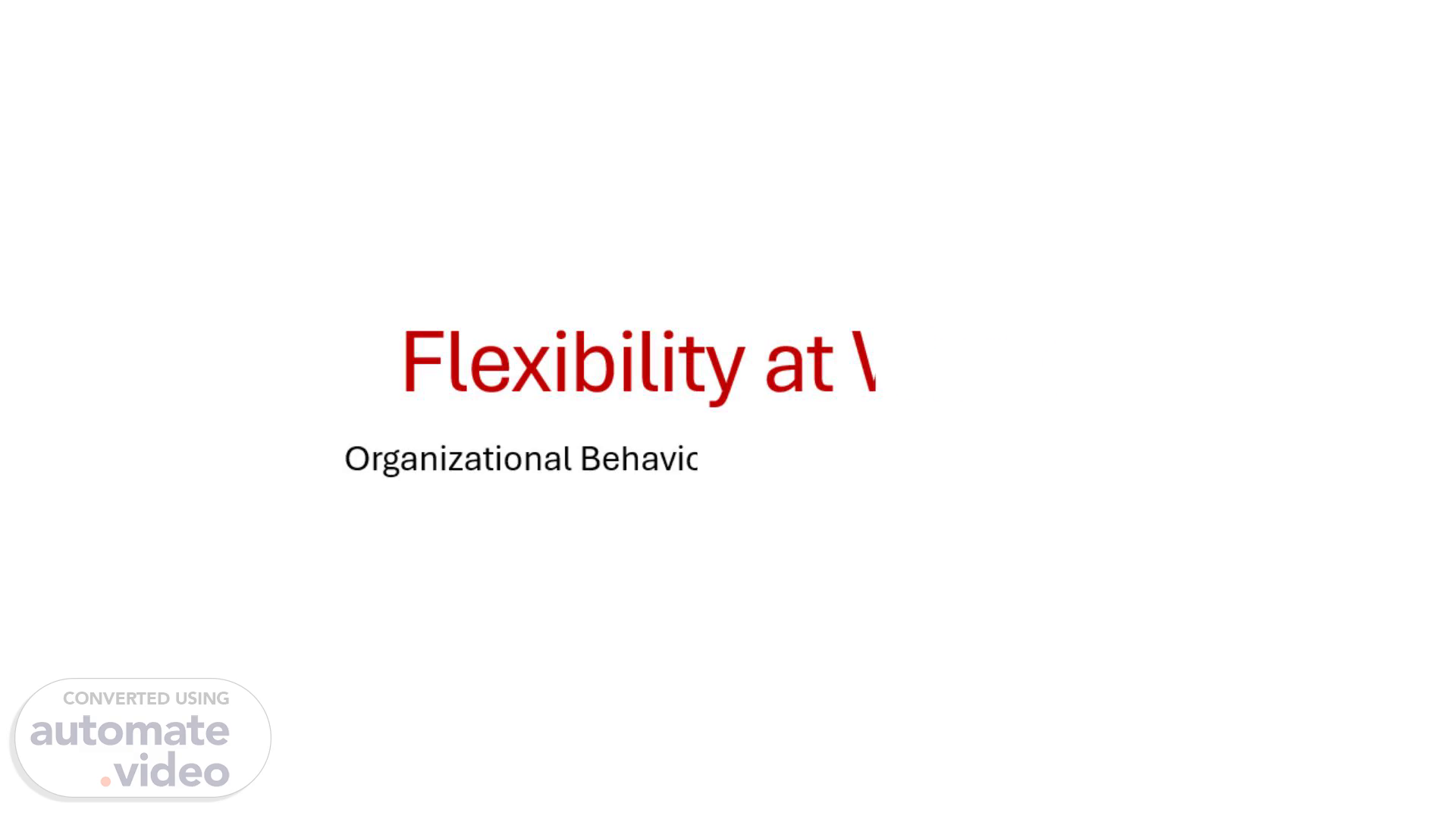Scene 1 (0s)
Flexibility at Work. Organizational Behavior | Upgrad x OP Jindal MBA.
Scene 2 (7s)
What does it mean to you?. Man reading postpone concept.
Scene 3 (33s)
What is it?. Practices offered to provide employees control over (Kossek & Lautsch, 2017).
Scene 4 (57s)
Some examples. Work flexibility over time. FLEXIBLITY AT WORK.
Scene 5 (1m 32s)
Why does it matter?. Managing Diversity and Inclusivity Sustainability Work- life balance Well-being.
Scene 6 (1m 53s)
Why does it matter?. Managing Diversity and Inclusivity Sustainability Work- life balance Well-being.
Scene 7 (2m 4s)
Flexible work helps employees balance work and personal life. For instance, HCL Technologies introduced a program allowing employees to choose between working full-time or part-time, supporting parents and caregivers..
Scene 8 (2m 19s)
Flexibility enables organizations to tap into diverse and uniquely competent talent pools. Infosys’ initiative to hire remote workers from rural India demonstrates this. Similarly, global companies like Salesforce prioritize flexibility to include neurodiverse employees..
Scene 9 (2m 34s)
Remote work reduces commuting, lowering carbon emissions. A study by Microsoft estimated that remote work could cut transportation emissions by up to 70%..
Scene 10 (2m 47s)
How might such policies reduce stress and burnout? What kinds of people can flexibility at work encourage to join and remain in the workforce? What could some environmental benefits of adopting such practices?.
Scene 11 (3m 2s)
Productivity concerns Communication concerns Fairness concerns.
Scene 12 (3m 22s)
Conclusion. FLEXIBLITY AT WORK. Offering flexibility in work arrangements is not just a business strategy—it’s a responsibility. By adopting flexible work practices, organizations can: Promote well-being, Foster inclusivity, and Contribute to sustainability..
